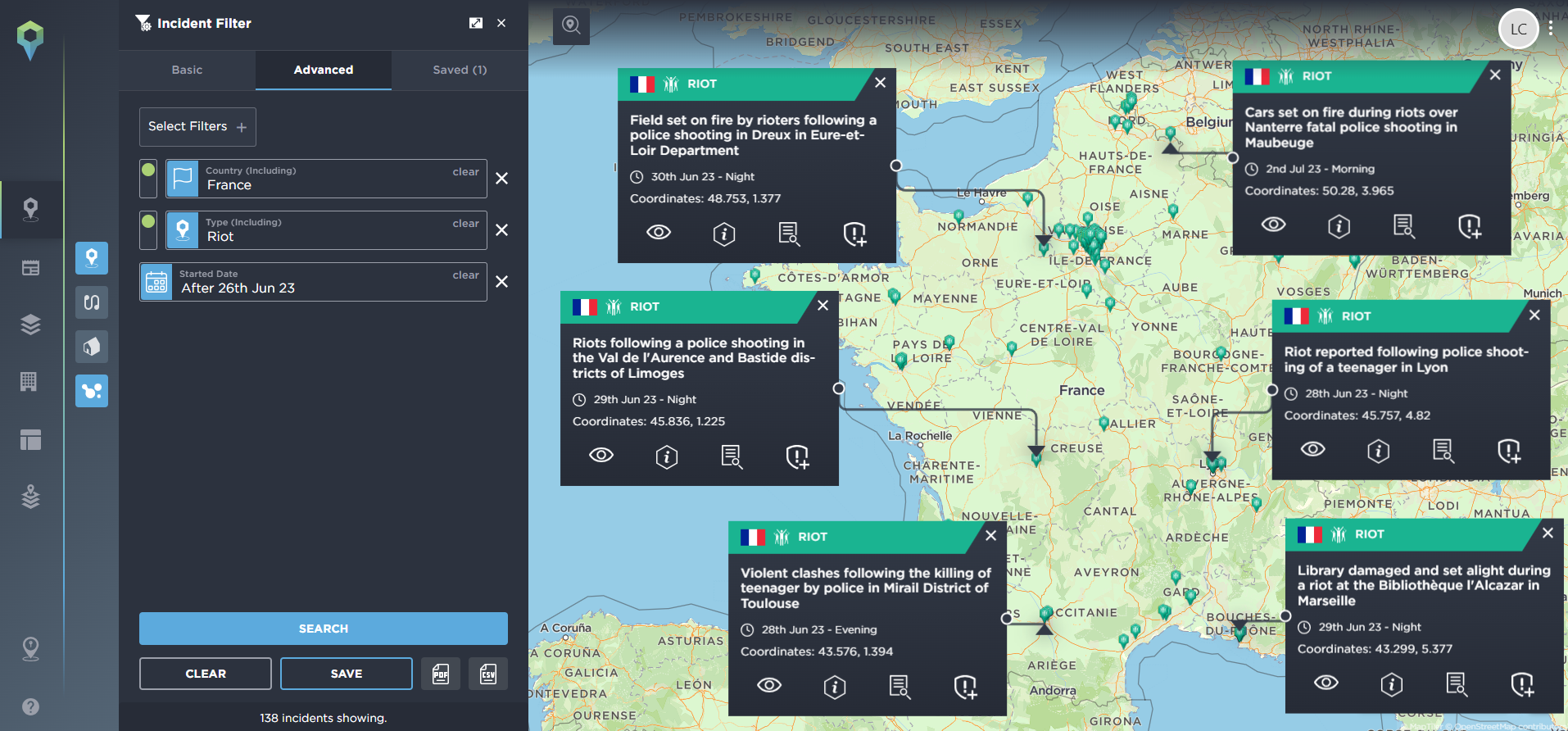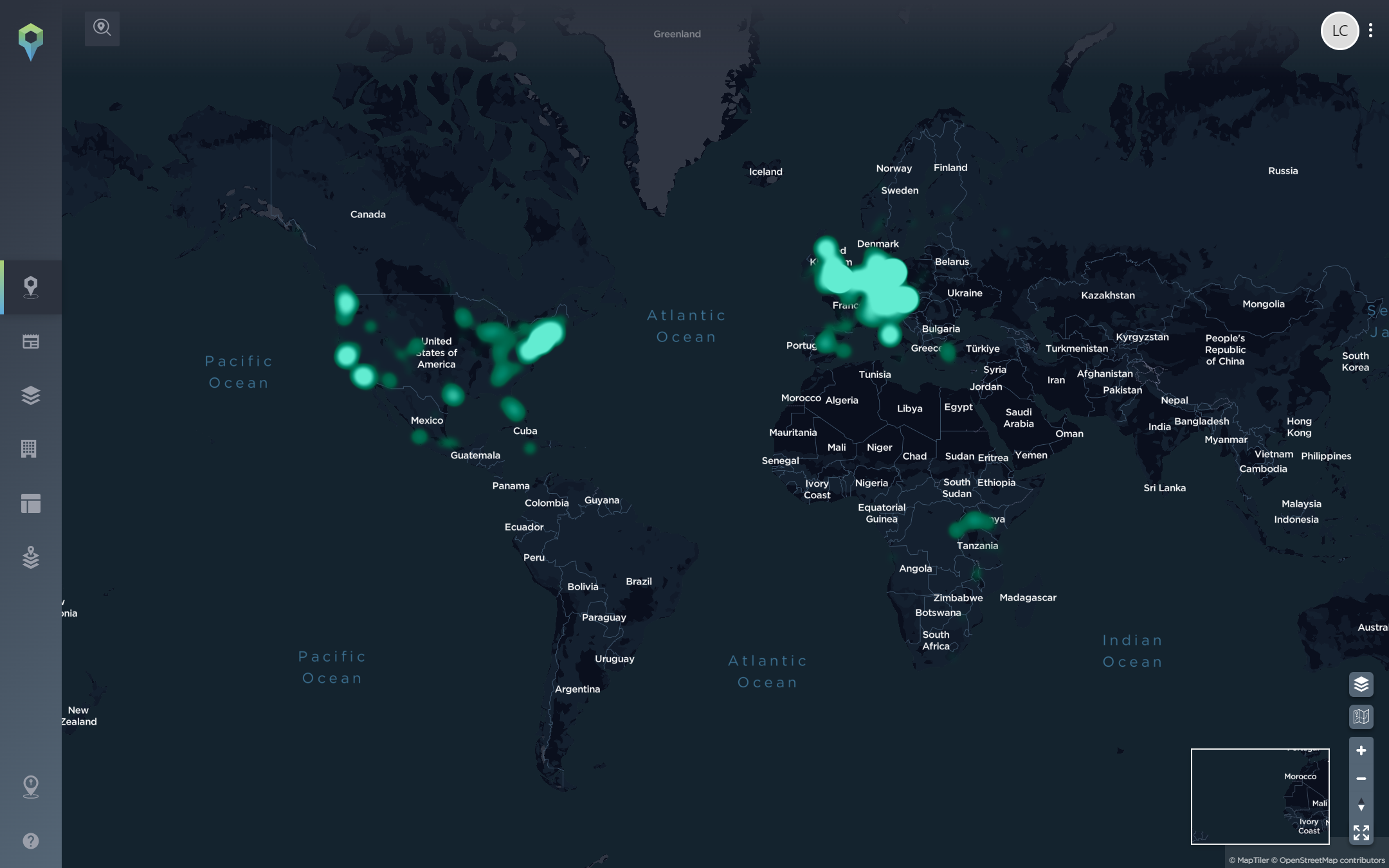The Use of Threat Intelligence to Protect University Campuses and Students
Having up-to-date, verified, and timely threat intelligence data about your industry can enhance the level of safety and protection you can offer your people.
Your people are often your most valuable asset, and within the Education sector, this is particularly prevalent as young people make up the majority of the individuals these organisations support; therefore, there is an enhanced level of risk mitigation and safeguarding required. Knowing what risks exist can allow security teams to be proactive and prepare for the worst-case scenario. Campus safety and student activism are two of the biggest physical security threats to universities.
In this blog, we will review activism threats faced by universities in 2023 and explore how threat intelligence can allow these organisations to better protect their students and staff going forward.
There are often thousands of people on a university campus at any one time, not to mention the number of people affiliated with the university who could be situated anywhere around the globe. On the Intelligence Fusion platform, emerging threats, real-time alerts, and over 1,000,000 historical incidents provide both context for planning and forewarning, which allow universities to effectively communicate with their people.
For employees and students travelling abroad, the risk to their safety can dramatically increase. As our data is accurately geo-located, it can be easily filtered. It can also be integrated with an existing app a university may already have for students to access. Therefore, a news feed could be created to allow your people to filter incidents based on criteria they care about most; they could be alerted about threats within a certain proximity of where they are. This can also be a beneficial tool for popular holiday destinations that students may be planning to visit during the spring/summer break. The university can provide intelligence-led reports that empower students and staff, allowing them to understand current trends and themes or emerging situations they should be aware of. It could also include advice about what to do should a situation escalate.
Climate change activism
In recent months, climate change activism has been increasing; multiple actors are prevalent within this space and often team up to create a bigger impact with their message. This can impact universities directly via protests and vandalism on campus but also travel disruption in and around the city.
Last Generation is a German-based activist group. In the last couple of weeks, they have conducted further activities as part of their ‘colour protest’ at multiple universities in Germany, vandalising buildings with spray paint. There have also been incidents of protesters throwing orange paint at famous landmarks and events, such as the Berlin Marathon and the Brandenburg Gate. The impact of these events has been limited but caused obvious disruption to day-to-day activities and cost security teams time and money.
In addition, earlier in the year, Last Generation protesters glued their hands to runways at local airports in Hamburg and Düsseldorf, causing widespread disruption in aviation operations. They have also been known to disrupt road traffic, with blockades affecting a multitude of industries.
Other climate change protesters use similar tactics to promote their message. Just Stop Oil and Extinction Rebellion have also recently targeted universities.
On the 14th of October, Extinction Rebellion protested outside of examination schools in Oxford, England, to show they were opposed to the University’s invitation to welcome Equinor to participate at its STEM Careers Fair. Equinor is a petroleum refining company that has recently been approved to operate in the controversial Rosebank oil field, the biggest undeveloped oil field in the North Sea. Around the same time, Just Stop Oil protested and vandalized multiple universities across England using similar tactics to Last Generation.
Israel-Palestine protests
Most recently, there has been an influx of Palestine and Israel protests, especially in the US; this has led to conflict in some instances and an increase in unrest. Below is an overview of some of the protests:

A selection of Israel-Palestine activism incidents [Image source: Intelligence Fusion]
At Columbia University on the 12th of October, two groups of hundreds of students faced each other in simultaneous Pro-Israel and Pro-Palestinian demonstrations. University officials blocked public access to the New York City campus as a safety measure.
Similarly, on the 9th of October, there was unrest between Jews and Muslims during protests staged at Indiana University.
Statements and actions by student groups supporting Palestinians have prompted outrage and fear among Jews. There have also been reports of harassment and assaults of Muslim students. Reports of increased Islamophobia as well as antisemitic incidents are clear across Europe and the US.
Metropolitan Police said that there has been a 1,353% increase in antisemitic offences and a 140% rise in Islamophobic offences between 1st and 18th of October. 218 antisemitic hate crimes have been recorded, compared to 15 during the same period last year, while 101 Islamophobic offences have been reported up from 42.

Unrest between Jews and Muslims at Indiana University [Image source: Intelligence Fusion]
Meanwhile, security teams are working to secure campuses without stopping students from practising free speech and spreading awareness. There have been instances of miscommunication by American universities, causing anger amongst multi-faith student groups; hence, the sensitivity and severity of the situation must be handled carefully in order to mitigate risk effectively.
The heightened antisemitic activity has not only impacted adults, but also students and young people. On the 10th of October, a Jewish student’s room was set on fire in Philadelphia, and on the 12th, a Stanford professor was suspended after separating non-Jewish from Jewish students.
Equally, Palestinian human rights activists say, “They’ve feared losing jobs and endured psychological harm for advocating for fair treatment of Palestinians under occupation”. They have also been subject to doxxing. A billboard truck drove near Harvard University’s campus displaying the names and photos of Harvard students whose organisations signed a statement blaming Israel alone for the deadly attacks by Hamas. A conservative nonprofit said it organised the truck featuring the virtual billboards with students’ names and images under a banner that reads: “Harvard’s Leading Antisemites.” On the 14th of October, a police report in Berlin detailed multiple xenophobic incidents, including the assault of a 15-year-old girl who was kicked causing her to fall to the ground and her headscarf was pulled off. Also, on the 13th, a Washington University professor was allegedly fired after asking for Palestinian ethnic cleansing in a social media post.
Multiple emerging threat warnings are mapped on the Intelligence Fusion platform following this activity; this warns businesses and people of heightened risks, expected clashes, or increased likelihood of attacks.
The Pro-Palestine group Palestine Action released a list that includes the locations of over 50 UK businesses supporting Israel’s weapon industry. The group called for people across the UK, the US, and Europe to take direct action against these businesses and demand a cease of operations.

An example of an emerging threat - Palestine Action's 'hit list' [Image source: Intelligence Fusion]
These events create a worrying environment for universities. If they fail to protect their students and are not seen as inclusive and supportive, it can have long-lasting reputational damage. It can also increase tensions on campus, having an adverse effect on the security teams who are attempting to improve safety.
Other low-impact protests
Less disruptive activism includes the cost-of-living protests with students campaigning over tuition fees predominantly across Europe, Africa and North America. Staff have also been striking over pay, which has caused further frustration and disruption. However, the security risks linked to this activity have been low.
Vivisection Exposed has also recently ramped up activity at universities in England, raising awareness of animal cruelty. Earlier in the year, they also campaigned in the US and Canada with their message – stop testing on animals; however, the impact of these protests has largely been limited.

[Image source: Intelligence Fusion]
Recent extreme protests
There have also been some more extreme, localised protests that have escalated. Below are some examples of major and extreme incidents:

[Image source: Intelligence Fusion]
For example, hundreds of students at the University of Zambia recently blocked the Great East Road and, vandalized vehicles and looted stores. The riots reportedly began due to the cancellation of student union elections. Police were called to the scene and arrested ten people.
In another example, anti-government protesters set fire to buildings and bushes at Cheikh Anta Diop University in Senegal. Fires destroyed twenty-one vehicles and new buildings located on the premises.
These severe events are examples of when the university security team must act swiftly. However, if they have an awareness of incidents linked to the university, the area they operate, as well as national and global events that may have a knock-on effect on their organisation, it can allow them to prepare and protect their people and assets – being proactive as opposed to reactive. Understanding when tensions are rising and events develop that may increase risk allows universities to plan for the worst-case scenario.
Protests abroad
This can be particularly important when students travel abroad for organised trips or even just to visit popular student holiday destinations during study breaks. Equipping universities with this information can allow them to protect their people not only when they are on campus but also further afield.
At Intelligence Fusion, we report 159 different threat types with information about protests, planned protests, strikes, and riots becoming more essential for a wide range of industries, allowing them to understand patterns and trends. Universities can use this data to grade countries as high-risk or low-risk. Risk assessments can be saved in a central location on our platform, making it a single source of truth for your organisation. All critical documentation can be saved in one place, making it easy for staff and students to gauge the level of risk, whether that’s due to political instability, health concerns, or a significant increase in certain types of criminality you and your team should be aware of.
For example, in December last year, a group of students from Calvin University were stranded in Peru as a result of violent demonstrations erupting over the impeachment and arrest of the country’s president who tried to dissolve their Congress. The local airport was damaged, and flights were cancelled. The students were told not to leave their accommodation. Using threat intelligence, the University could have seen warning signs of this activity breaking out and put prevention measures in place to avoid students from getting stranded in an unsafe situation.
Moving forward...
Predicting protests can be difficult, but using a threat intelligence platform can support the endeavour by giving security professionals at universities a wider view of events taking place locally and globally that may have repercussions on their campus, students or reputation.
Activism will always be a core part of student life, taking into account issues that are prevalent across the globe. However, it is likely that the volume of protests will increase. The vast amount of topics causing disruption and unrest pose a constant security threat for universities. A threat intelligence platform can detect controversial events, trends and decisions, including policies passed at a local or national level that may lead to protests. It can also be beneficial when detecting heightened political tensions or social issues at a national or global scale that may lead to protests, for example, LGBT or abortion rights in the US. These issues may trigger discussions and activism on university campuses.
On a national scale, threat intelligence helps universities understand issues that are taking place in countries where they might have a satellite campus or where faculty are studying or researching abroad. This allows security professionals to gauge the threats to their people and take appropriate measures to mitigate risk.









